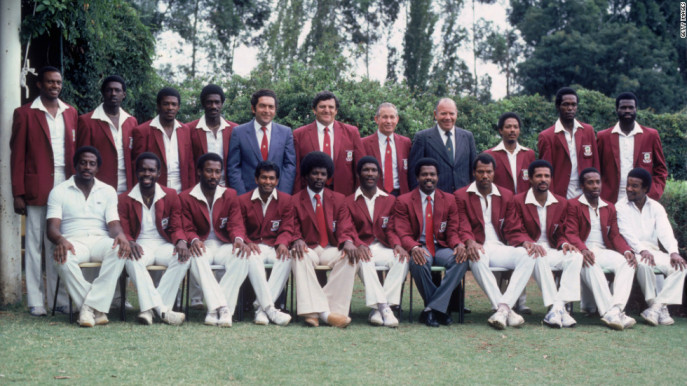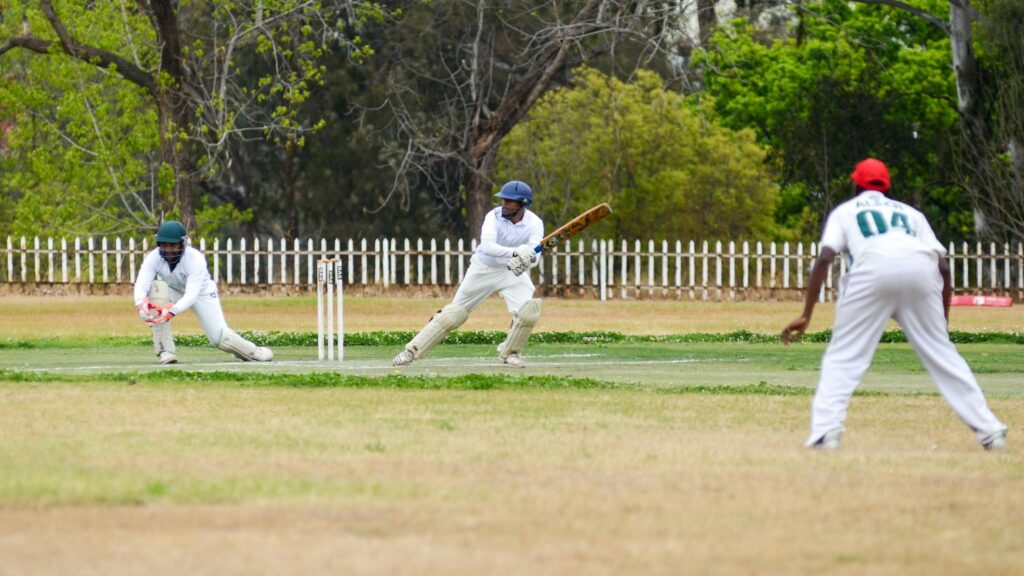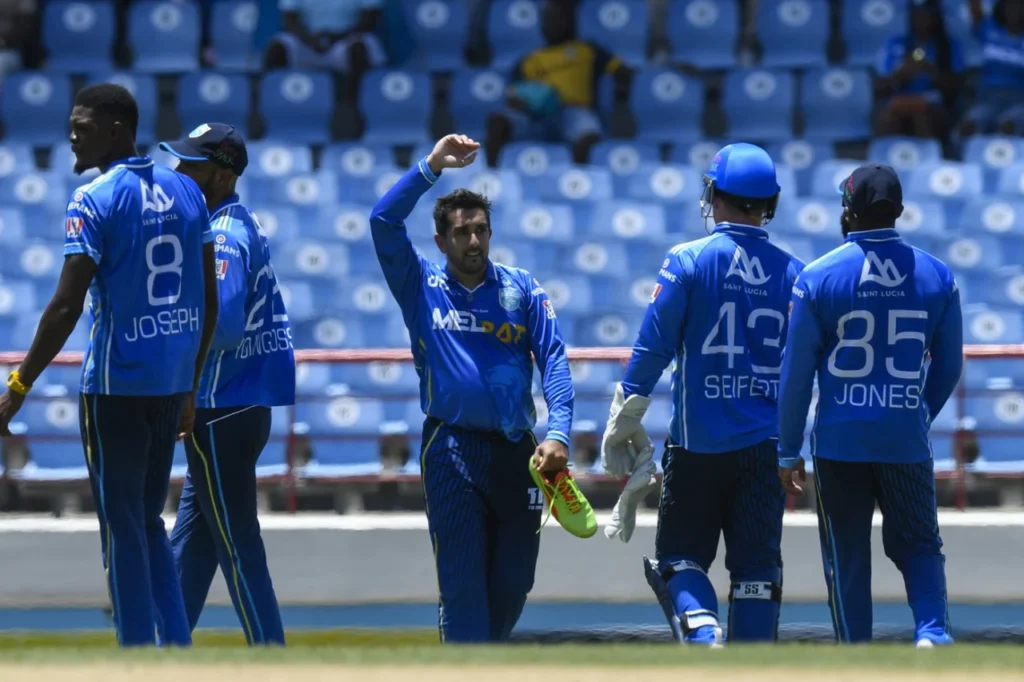
In 1983, Caribbean cricket was shaken to its core. A group of West Indian players — some established stars, others fringe hopefuls — agreed to tour apartheid South Africa. At a time when the world had united in a sporting boycott of the racist regime, their decision sent shockwaves through cricket and society.
For the players, the lure was irresistible: money, opportunity, and a chance to play more cricket. But the cost was devastating — bans, isolation, and the permanent stain of being branded “rebels.” Four decades later, their story remains one of sport’s most controversial chapters.
The Allure of the Tour: Money, Opportunity, and Temptation
The Financial Carrot
The deals on offer were extraordinary for the time. Each player stood to earn between $100,000–$120,000 USD, far beyond what West Indies internationals could expect from match fees or endorsements. For many, cricket barely paid the bills. The South African contracts promised financial security in a career where futures were always uncertain.
More Than Just Money
For some, the chance to play high-level cricket was just as appealing. South Africa’s system was largely closed to non-white cricketers, but these tours promised competitive matches in unfamiliar conditions. A few players convinced themselves they were simply playing cricket, not endorsing politics. History, however, saw it differently.
The Political Firestorm
Swift and Ruthless Sanctions
The West Indies Cricket Board (WICB) wasted no time. Every player who joined the tour was banned for life from representing the West Indies. Their international careers ended overnight.
The International Cricket Council (ICC) and other boards supported the stance, shutting down avenues in English county cricket too. With one decision, these players went from professionals with bright futures to outcasts of the game.
Condemnation at Home and Abroad
The backlash across the Caribbean was ferocious. Fans, media, and anti-apartheid campaigners saw the tours as a betrayal of both their people and the global movement against racial oppression. The “rebel” label became permanent — a stigma that would follow them for decades.
The Rebels: Who They Were
The West Indies’ rebel squads, spread across two tours (1982–83 and 1983–84), included a mix of stars and lesser-known names:
- Lawrence Rowe – once hailed as “the next Sobers,” a supremely gifted batsman.
- Alvin Kallicharran – stylish left-hander and former West Indies captain.
- Colin Croft – fearsome fast bowler from the golden era.
- Sylvester Clarke – raw pace talent, considered unlucky not to play more Tests.
- Franklyn Stephenson – brilliant all-rounder, later famed in county cricket.
- Plus others like Richard Austin, Bernard Julien, David Murray, Emmerson Trotman, Monte Lynch, Collis King, and Ezra Moseley.
For stars like Rowe, Croft, and Kallicharran, the decision was shocking. For fringe players, it was perhaps their only shot at sustained top-level cricket. But whatever their motivations, history judged them together.
Careers Cut Short
International Dreams Shattered
The bans were absolute. None of the rebels played international cricket again. Rowe, Kallicharran, and Croft could have extended their Test careers during the West Indies’ peak years. Clarke might have become one of the fastest of his generation. Stephenson could have filled the void later taken by Carl Hooper or Roger Harper. Instead, the door closed forever.
County Cricket Doors Slammed Shut
English counties, under pressure to uphold the boycott, refused to sign most rebels. For cricketers who relied on those contracts for income, it was another blow. Only a handful, like Stephenson, managed to carve out reputations elsewhere.
Stigma, Struggles, and Divergent Paths
The “rebel” tag was more than just a sporting label. It carried social weight. Many of the players found themselves unwelcome in cricket circles, barred from coaching and commentary roles. Some, like Richard Austin, fell into tragic decline, battling poverty, addiction, and illness. Others faded quietly into obscurity.
A few rebuilt their careers outside the West Indies setup. Stephenson became a legend in county cricket. Monte Lynch eventually played for England. But the shadow of the rebel tours lingered — a constant reminder of choices made under difficult circumstances.
Looking Back: Legacy and Lessons
A Slowly Softening Stance
Decades later, some bans were quietly lifted, and a handful of players reconnected with Caribbean cricket in limited ways. Yet, no full reconciliation ever came. The bitterness, especially among fans who saw the tours as betrayal, never completely disappeared.
A Complicated History
Today, historians view the tours with nuance. The financial struggles of West Indian cricketers are better understood, as is the lack of support they received from their own board. But condemnation remains. Playing in apartheid South Africa, however lucrative, will always be remembered as a step too far.
Conclusion: The High Price of Crossing a Line
The rebel tours of 1983 remain one of the darkest episodes in West Indian cricket. For the 16 men involved, the rewards were immediate but fleeting. The consequences — bans, ruined reputations, and lasting stigma — defined their careers and their lives long after they stopped playing.
Their story is more than a cautionary tale of money versus morality. It is a reminder of how sport and politics are inseparable, and how athletes often carry the weight of decisions far larger than the game itself.
The West Indian Rebels of 1983: How Apartheid’s Shadow Shaped Their Cricketing Fates
In the summer of 1983, shockwaves rippled through the Caribbean and beyond. A group of West Indian cricketers — some household names, others fringe hopefuls — boarded planes to Johannesburg. Their destination was not another Test tour of England or Australia, but South Africa: a nation locked under the iron grip of apartheid, isolated from the sporting world by near-universal boycott.
The news struck like betrayal. The Caribbean, then riding high on West Indies’ dominance of world cricket, reacted with fury. The West Indies Cricket Board (WICB) moved swiftly, banning the players for life. Fans who once roared for Lawrence Rowe’s elegance or Colin Croft’s thunderbolts now spat words like “traitor.” Anti-apartheid groups condemned them outright. What had driven these men to risk everything? The answer lay in a complicated mix of money, opportunity, and disillusionment.
The Lure of the Rand: Money, Cricket, and Controversy
For most of the rebels, the decision was brutally simple: money. South African promoters dangled contracts worth $100,000–$120,000 USD, a fortune compared to what West Indian cricketers earned then. International cricket in the 1980s paid little, and even stars often struggled to secure their futures. A few weeks in South Africa promised financial security that the maroon cap could not.
There was also the promise of cricket itself. South Africa, though segregated and internationally banned, still boasted world-class facilities and a hunger for top-level competition. For fringe players overlooked at home, the rebel tour offered a rare chance to test themselves in an elite environment.
But the political stakes could not be ignored. By agreeing to tour, the rebels not only defied the boycott — they appeared to lend legitimacy to a regime built on racial oppression.
The Political Firestorm
The response was immediate and unforgiving.
- The WICB: Permanent bans, effectively exiling the rebels from ever wearing West Indies colors again. Careers that could have lasted years were cut short in a single announcement.
- The ICC and other nations: Support for the sanctions, ensuring no backdoor return. English counties, once a lifeline for many West Indian professionals, closed their doors as well.
- Public opinion: The harshest judge of all. Across the Caribbean, the players were branded mercenaries, accused of betraying not just their fans but the global fight against apartheid.
The label “rebel” stuck — and it carried a stain no amount of runs or wickets could wash away.
The Men Behind the Decision
The two tours (1982–83 and 1983–84) included 19 players, ranging from established internationals to near-unknowns:
- Big names: Lawrence Rowe, Alvin Kallicharran, Colin Croft, Sylvester Clarke.
- Promising talents: Franklyn Stephenson, Ezra Moseley, Collis King.
- Journeymen and fringe players: Herbert Chang, David Murray, Emmerson Trotman, Everton Mattis, Albert Padmore, and others.
For fans, seeing stars like Rowe and Kallicharran — once the pride of West Indies batting — walk away was devastating. Their involvement gave the tour a legitimacy that cut deeper than if it had been filled only with fringe hopefuls.
Fallout: Careers Halted, Futures Lost
The impact was brutal and lasting.
- International exile: None of the rebels played for the West Indies again. Careers that might have added depth to the all-conquering 1980s side instead ended in silence.
- Lost county contracts: For many, England’s county circuit had been both livelihood and training ground. After the ban, counties refused to touch them.
- Public shame: At home, the players carried the stigma of betrayal. Fans turned their backs, communities shunned them, and the rebel label followed them into retirement.
Some lives unraveled tragically. Richard Austin, once a gifted all-rounder, fell into addiction and homelessness. Others, like Sylvester Clarke, were remembered more for what might have been than for what they achieved.
The “What Ifs” of West Indies Cricket
The rebel bans robbed the Caribbean of immense talent. Imagine if Sylvester Clarke had joined Holding, Garner, and Marshall in the Test side. What if Franklyn Stephenson, later a legend in county cricket, had been unleashed as a West Indies all-rounder? Could Rowe, Croft, and Kallicharran have extended the dynasty even further?
Instead, the 1980s West Indies juggernaut marched on without them — dominant still, but forever missing those pieces.
Aftermath and Legacy
Over time, some fences were mended. A handful of bans were lifted quietly. Ezra Moseley even returned to play for the West Indies in the 1990s. Yet for most, reconciliation came too late to matter. The stigma lingered, shutting them out of coaching, commentary, and cricketing administration.
Today, history views the rebel tours with complexity. There is greater understanding of the players’ financial struggles — how poorly they were treated by boards compared to modern stars earning millions in IPL and T20 leagues. Yet condemnation remains. The tours are remembered less for cricket and more as a cautionary tale of sport entangled with politics.
Conclusion: A Heavy Price for a Controversial Choice
The 1983 rebel tours stand as one of the most painful chapters in West Indies cricket. For the players, the lure of quick riches turned into a lifetime of regret and exclusion. For the Caribbean, it was a wound that cut across sport, politics, and identity.
In the end, the rebels’ story is not just about cricket. It is about how athletes navigate impossible choices when the game they love collides with the world’s harshest realities. The lesson still echoes today: in sport, as in life, every decision carries a cost — and some costs last a lifetime.
Join the Conversation!




